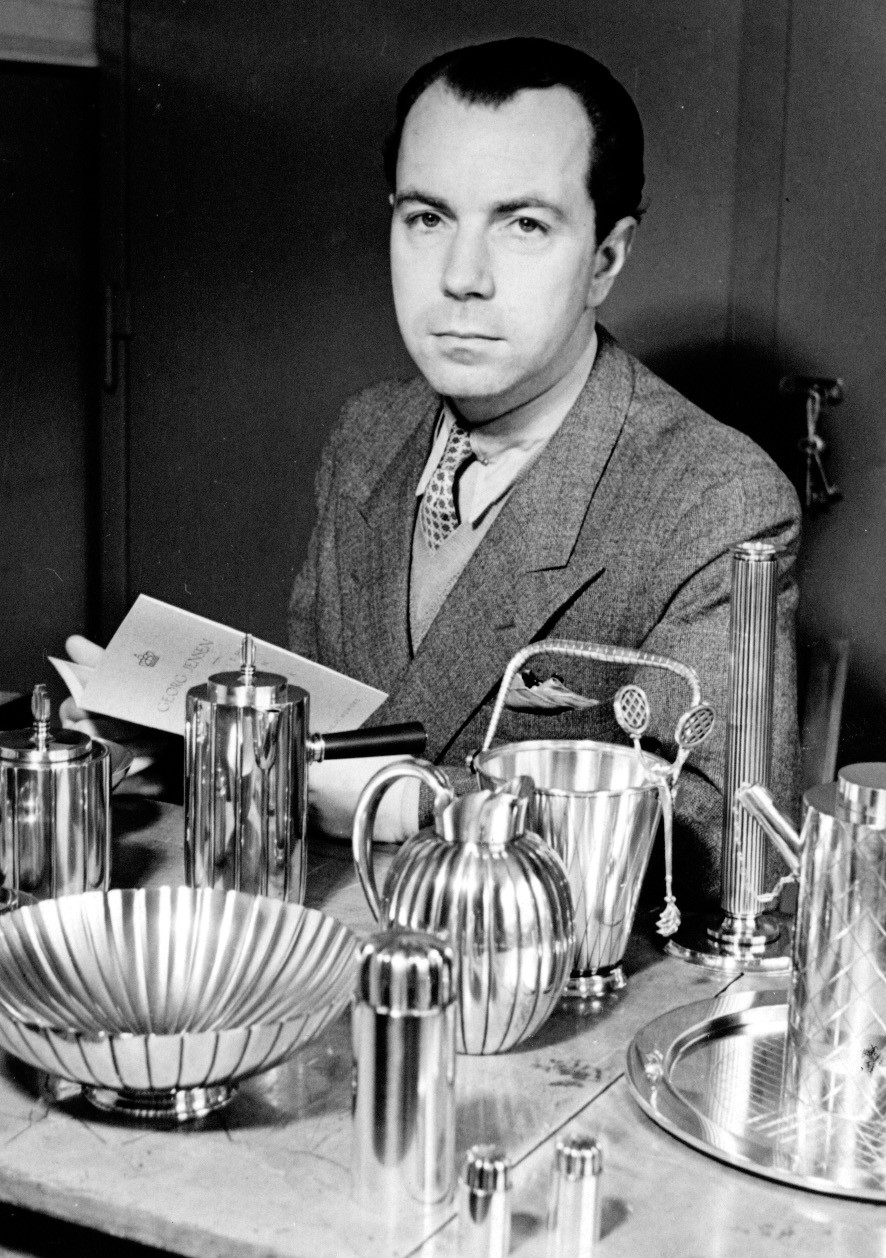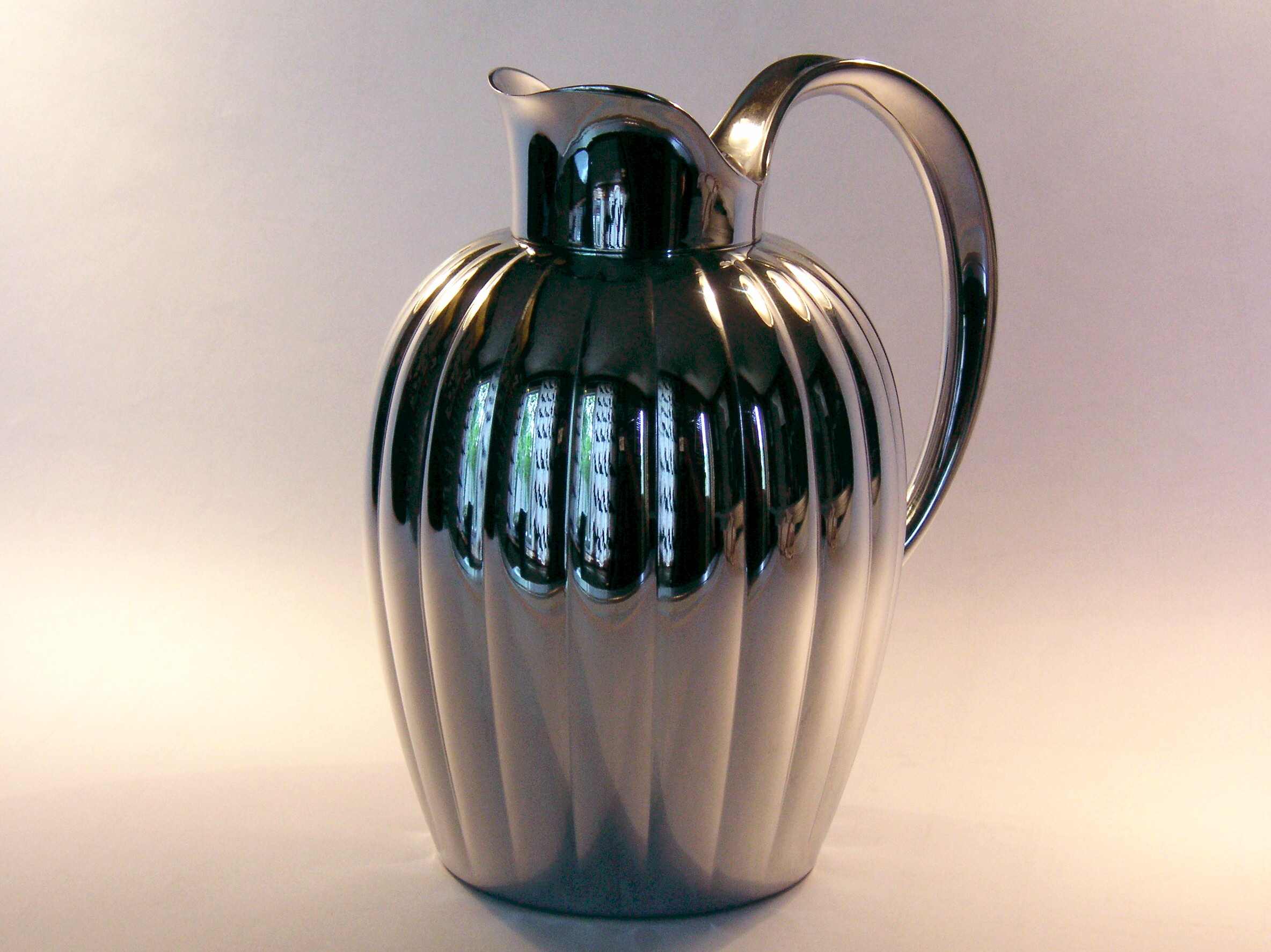1. Overview

Sigvard Oscar Fredrik Bernadotte, Count of Wisborg (1907-2002), originally known as Prince Sigvard of Sweden, Duke of Uppland, was a distinguished Swedish industrial designer and a member of the Swedish Royal Family. As the second son of the future King Gustaf VI Adolf and Princess Margaret of Connaught, a granddaughter of Britain's Queen Victoria, Bernadotte held a prominent royal position from birth. However, his marriage in 1934 to a woman of unequal rank led to his exclusion from the line of succession and the loss of his princely and ducal titles, in accordance with Swedish royal tradition and law. Despite this, he was later granted the Luxembourgian title of Count of Wisborg in 1951. For the remainder of his life, Bernadotte engaged in a persistent and notable struggle to regain recognition for his princely title, even declaring himself 'Prince Sigvard Bernadotte' in 1983 and pursuing his claim to the European Court of Human Rights, albeit unsuccessfully. Concurrently, he built an influential career as an industrial designer, creating numerous iconic products ranging from luxury silver to everyday household items, earning him widespread acclaim and leaving a lasting legacy in the field. He was also notable for his longevity, becoming Queen Victoria's longest-lived male descendant for a period. Bernadotte was a paternal uncle of King Carl XVI Gustaf of Sweden and a maternal uncle of Queen Margrethe II of Denmark and Anna-Maria, Queen of Greece.
2. Early life and education
Sigvard Bernadotte's early life was characterized by his royal lineage and a family environment that fostered both discipline and a modern approach to upbringing, influencing his later pursuits in design and the arts.
2.1. Birth and childhood
Sigvard Bernadotte was born on June 7, 1907, at Drottningholm Palace in Stockholm, Sweden. He was the second child of Crown Prince Gustaf Adolf of Sweden (who would later become King Gustaf VI Adolf) and his first wife, Princess Margaret of Connaught. His mother, Princess Margaret, was the eldest daughter of Prince Arthur, Duke of Connaught and Strathearn and Princess Louise Margaret of Prussia, making Sigvard a great-grandchild of Britain's Queen Victoria.
He grew up in a warm and modern family environment that diverged from the strict traditional royal court life prevalent in Stockholm. His mother, a modern woman, was actively involved in raising her children. Summers spent at Sofiero Palace in southern Sweden were particularly cherished, allowing the family to enjoy time together in the beautiful seaside and expansive gardens. Sigvard observed his mother's artistic activities, including writing, painting, and photography, often assisting her by carrying her painting equipment.
2.2. Education and early interests
Bernadotte was a bright child and, unlike some other royal children in Sweden, did not suffer from dyslexia. He achieved excellent academic scores and graduated from Lundsbergs School in 1926. He then pursued higher education at Uppsala University, where he studied political science and art history. Upon graduating in 1929, he became the first member of the House of Bernadotte to earn an academic degree. During his time at Uppsala, he was an enthusiastic participant in student life and an active member of the university's drama group.
In 1930, he was admitted to Konstfack, a design school in Stockholm, where he began to formalize his artistic talents, with Professor Olle Hjortsberg being one of his instructors. During his studies in Stockholm, he also established contact with the renowned Danish company Georg Jensen, for whom he began designing small items, marking his early foray into industrial design. Furthermore, he briefly indulged his passion for theater and performance by traveling to Germany under an assumed name, where he worked as an assistant director and contributed to set design. It was also during this period in Berlin that he met his first love, a commoner. During World War II, Bernadotte served as Lieutenant in the Svea Life Guards.
3. Royal status and marriages
Sigvard Bernadotte's life was significantly shaped by his royal birth, the circumstances under which he lost his princely title due to marriage, and his subsequent lifelong efforts to reclaim a princely designation.
3.1. Marriages
Sigvard Bernadotte married three times throughout his life.
His first marriage was to Erica Maria Regina Rosalie Patzek (1911-2007) on March 8, 1934, at Caxton Hall in London. Erica was the daughter of German businessman Anton Patzek and Maria Anna Lála. Witnesses at the wedding included Erica's brother, Georg Patzek, and a lawyer, Mr. Gordon. This marriage, being of unequal rank (a morganatic marriage), resulted in Sigvard losing all his royal privileges and princely titles. The couple had no children and divorced on October 14, 1943. Following the divorce, Sigvard embarked on his silver design business.
Just twelve days after his first divorce, on October 26, 1943, he married Sonja Helene Robbert (1909-2004) in Copenhagen, Denmark. Sonja was a Danish commoner, the daughter of Robert Alexander Christensen Robbert and Ebba Elisabeth Svenson. Together, they had one son, Michael Sigvard Bernadotte, Count of Wisborg, born on August 21, 1944. Their marriage ended in divorce on June 6, 1961.
Michael Bernadotte later married Christine Vellhöfer in February 1976. Born on April 26, 1947, in Stuttgart, Christine was the daughter of Ernst Vellhöjer and Erna Kromer. Michael and Christine had one daughter, Countess Kajsa Michaela Sophia Bernadotte af Wisborg, born on October 12, 1980, in Stuttgart.
A month later, on July 30, 1961, Sigvard married for the third time to Swedish actress Marianne Lindberg Tchang (born 1924) at the Oscar Cathedral in Stockholm. Marianne was the daughter of Helge Lindberg and Thyra Dahlman and had been previously married to Gabriel Tchang, a son of the Chinese minister in Stockholm, with whom she had two children. Marianne later became Countess Marianne Bernadotte of Wisborg.
3.2. Loss of princely title
Born a Prince of Sweden and Duke of Uppland, Sigvard Bernadotte lost these titles and was excluded from the Line of succession to the Swedish throne upon his first marriage in 1934. This was due to his union with Erica Patzek, who was considered a "private man's daughter" (enskild mans dottera private man's daughterSwedish), a person of unequal rank. This act was deemed a violation of provisions in both the 1809 Instrument of Government and the 1810 Act of Succession, which were in force at the time and prohibited marriages between a prince and a commoner. The decision to strip him of his princely and ducal titles was made by the King in Council. Following this, by the King's wishes, he was to be referred to simply as 'Mr. Sigvard Bernadotte' in Sweden. His cousin, Lennart Bernadotte, who had faced a similar situation two years earlier (being the first Swede in history to do so), regarded himself and Sigvard as having been subjected to cruel treatment by the Royal Court of Sweden for several decades due to their marriages.
3.3. Quest for princely title
Despite the royal court's decision, Sigvard Bernadotte embarked on a lifelong quest for recognition of his princely title. On July 2, 1951, Grand Duchess Charlotte of Luxembourg (the head of state at the time) admitted him, his wife, and his marital descendants into the nobility of Luxembourg with the title Count of Wisborg. In that conferral, he was also explicitly referred to as 'Sigvard Oscar Frederik Prince Bernadotte', a detail that would fuel his claim.
For over 30 years, argument and controversy surrounded his rank and titles in Sweden, issues that intensified following his father's death in 1973. Frustrated by being demonstratively snubbed by the Swedish Royal Court, notably during a state visit by Queen Elizabeth II in 1983, Bernadotte publicly announced to the Tidningarnas Telegrambyrå news agency on May 28 of that year that he should henceforth be known as 'Prince Sigvard Bernadotte'.
His efforts were supported by several legal experts, who cited a precedent established in 1888 for his great-uncle Oscar, whose noble title was confirmed by the Government of Luxembourg in 1892. Bernadotte petitioned for the acknowledgement of the 'Prince Bernadotte' title in Sweden, though he did not seek reinstatement in the line of succession to the Swedish throne. However, King Carl XVI Gustaf was criticized for never granting his uncle's request, which led to a notable estrangement between them.
In a final attempt to have his princely title acknowledged by the Government of Sweden, Bernadotte pursued his case at the European Court of Human Rights. However, in 2004, two years after his death, the ECHR declared the application inadmissible. The inscription on his gravestone, however, clearly states that he was "born Prince of Sweden," reflecting his birthright despite the controversy.
4. Professional career as a designer
Sigvard Bernadotte established an extensive and influential career as an industrial designer, recognized for his versatility and significant contributions across various materials and product types. His work spanned from luxury silver to everyday plastic items, leaving a lasting impact on design.
4.1. Early design career
Following World War II, Sigvard Bernadotte became the creative director for the prestigious Danish company Georg Jensen A/S. His collaboration with Georg Jensen continued until 1980, during which he created numerous renowned silver designs. In 1950, he expanded his design ventures by co-founding the design studio Bernadotte & Bjørn Industrial A/S in Copenhagen with Danish architect and designer Acton Bjørn. This successful partnership laid the groundwork for many famous inventions. The company maintained its headquarters in Copenhagen and also had branch offices in Stockholm and New York City. Bernadotte was known for his role as an inspiration and trusted advisor to young designers, possessing a unique ability to identify and nurture talent.
4.2. Iconic designs and creative work
Bernadotte's design portfolio is distinguished by several iconic products that gained international recognition. His original Art Deco "Bernadotte" collection, designed in 1938 for Georg Jensen, remains a stable part of the company's product range to this day. His distinctive silver designs earned him international fame, with many of his works now held in museums worldwide and prominent private collections.

Among his other notable creations are the "Red Clara opener" for Nilsjohan, the EKA Swede 38 folding knife, and the "Margrethe bowl." The latter, a cooking bowl designed in 1954 by Bernadotte & Bjørn Industridesign A/S for Rosti, was named after his niece, Queen Margrethe II of Denmark. He also designed the "Bernadotte jug" and the Facit Private typewriter, as well as various glasses frames. For Bernadotte, the most meaningful objects were those used in daily life. His aspiration was to create everyday items that would enhance and beautify people's lives, a desire he successfully realized throughout his career.

4.3. Own design studio and later career
In 1964, Bernadotte established his own studio, Bernadotte Design AB, in Stockholm. Although this studio unfortunately closed in the early 1970s, he remained actively engaged in the design field throughout his life. His tireless efforts and love for design were evident, with him continuing to introduce new significant works even into his nineties.
His work was showcased in a dedicated exhibition titled "Design Sigvard Bernadotte" at the National Museum of Fine Arts in 1997. The exhibition, which opened with Crown Princess Victoria and his wife Marianne by his side, proved to be highly successful and continued through 1998, garnering greater recognition in Sweden than anticipated. In November of the same year, King Carl XVI Gustaf of Sweden honored Bernadotte with the prestigious Prince Eugen Medal.
4.4. Involvement in the film industry
Beyond his design career, Sigvard Bernadotte also had a brief but notable involvement in the film industry. He worked as an assistant director at MGM in Culver City, California. Additionally, he served as a technical advisor for the 1937 film The Prisoner of Zenda. Later in his life, he made a brief appearance in the 1968 Italian mondo film Sweden: Heaven and Hell, which notably featured his work in industrial design from Bernadotte Design AB, alongside selected items from his portfolio.
5. Later life and death
In his later years, Sigvard Bernadotte was recognized for his remarkable longevity and continued to be an active presence until his death in 2002.
5.1. Longevity and final years
From 1994 until his death in 2002, Sigvard Bernadotte held the distinction of being the oldest living great-grandchild of Queen Victoria of the United Kingdom. He lived to the age of 94 years, 7 months, and 28 days, making him Queen Victoria's longest-lived male descendant for that period, a record that was later surpassed by his younger brother, Carl Johan Bernadotte, Count of Wisborg, on June 29, 2011. At the time of Sigvard's death, three other great-grandchildren of Queen Victoria were still alive: Princess Beatrice of Spain, Lady Katherine Brandram, and his brother Carl Johan Bernadotte, Count of Wisborg. Despite his advanced age, Bernadotte remained a diligent and enthusiastic inventor, continuing to present significant works even in his nineties.
5.2. Death and funeral
Sigvard Bernadotte died on February 4, 2002, at the Borgarhemmet nursing home in Stockholm. His funeral took
place on February 15, 2002, at Engelbrekt Church in Stockholm. The ceremony was attended by members of both the Swedish and Danish royal families, reflecting his significant connections. He was buried at the Royal Cemetery in Hagaparken, Solna. The inscription on his gravestone distinctly notes that he was "born Prince of Sweden," a final nod to his controversial royal status.
6. Legacy and evaluation
Sigvard Bernadotte's legacy is defined by his multifaceted identity as a royal by birth and a pioneering industrial designer. His life embodied a unique blend of aristocratic tradition and modern innovation, creating a complex public and historical perception.
6.1. Impact on industrial design
Bernadotte's contributions to industrial design left a lasting impact, establishing him as a versatile and influential figure in the field. He is widely recognized for his ability to design a broad range of products, from exquisite luxury silver pieces for Georg Jensen to practical and aesthetically pleasing everyday items made of plastics. His specific silver designs garnered international acclaim and are now found in museums worldwide and famous collections, solidifying their place in design history. Bernadotte's passion for creating objects that were both functional and beautiful, enhancing daily life for the public, was a driving force behind his prolific output. His innovative approach and commitment to improving everyday aesthetics influenced subsequent generations of designers.
6.2. Public and historical perception
Sigvard Bernadotte is perceived by the public and historically through the lens of his dual identity: a prince who became a designer, and a royal who fiercely fought for a title he believed was rightfully his. While his achievements in industrial design are widely celebrated and acknowledged for their innovation and aesthetic appeal, his persistent struggle to regain his princely title generated considerable public and historical discussion. This lifelong legal battle, including his unsuccessful appeal to the European Court of Human Rights and the estrangement from his nephew King Carl XVI Gustaf, highlights a critical aspect of his public persona-his unwavering conviction regarding his birthright versus the rigid protocols of the Swedish monarchy. His gravestone's inscription, "born Prince of Sweden," serves as a poignant summary of this enduring aspect of his legacy.
7. Honours and ancestry
Sigvard Bernadotte received various national and foreign honors throughout his lifetime, and his ancestry connects him to prominent European royal houses.
7.1. Honours and decorations
Bernadotte was recognized with several significant orders and commendations:
- National Honors (Sweden):**
50x50px Commander Grand Cross of the Order of the Polar Star (awarded March 21, 1952).
- King Gustaf V's Jubilee Commemorative Medal (1928).
- King Gustaf V's Jubilee Commemorative Medal II (1948).

50x50px Prince Eugen Medal (awarded 1997).
- Foreign Honors:**
50x50px Knight of the Order of the Elephant (Denmark).
7.2. Ancestry
Sigvard Bernadotte's ancestry illustrates his deep connections to various European royal families. He was the second son of Gustaf VI Adolf of Sweden and Princess Margaret of Connaught. His paternal grandparents were Gustaf V of Sweden and Princess Victoria of Baden, while his maternal grandparents were Prince Arthur, Duke of Connaught and Strathearn and Princess Louise Margaret of Prussia. Through his mother, he was a great-grandson of Queen Victoria of the United Kingdom, and through both parents, he was descended from a long line of European royalty including Oscar II of Sweden, Albert, Prince Consort, Frederick I, Grand Duke of Baden, and Wilhelm I of Germany. His lineage underscores his position within a vast network of European aristocracy.

